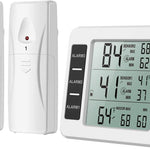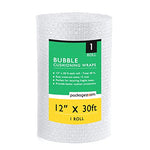You have no items in your shopping cart.
Facility maintenance is a crucial aspect of ensuring the smooth operation and longevity of any physical infrastructure. From commercial buildings and manufacturing plants to residential complexes and educational institutions, regular upkeep and proactive maintenance are vital for guaranteeing optimal functionality, safety, and cost-efficiency. In this comprehensive guide, we will delve into the world of facility maintenance, exploring its importance, best practices, common challenges, and effective strategies. Whether you're a facility manager or simply interested in understanding the intricacies of maintaining a well-functioning space, this article will equip you with the knowledge you need to make informed decisions and ensure the optimal performance of your facility.
The Significance of Facility Maintenance
Proper facility maintenance plays a pivotal role in the seamless operation of any infrastructure. Here's why it matters:
-
Enhanced Equipment Performance: Regular maintenance minimizes equipment downtime, ensuring consistent performance and productivity.
-
Increased Energy Efficiency: By addressing inefficiencies, such as faulty HVAC systems or insulation, facility maintenance helps reduce energy consumption and lower utility costs.
-
Preserved Asset Value: Diligent upkeep helps protect and preserve the value of the facility, preventing the need for costly repairs or replacements in the long run.
-
Ensured Safety and Compliance: Regular inspections and maintenance procedures promote a safe environment, minimizing the risk of accidents and ensuring compliance with relevant regulations.
-
Improved Occupant Satisfaction: Well-maintained facilities contribute to a positive occupant experience, fostering productivity, comfort, and a sense of well-being.
Common Facility Maintenance Practices
Maintaining a facility requires a systematic and proactive approach. Here are some essential practices:
1. Preventive Maintenance
Preventive maintenance involves scheduled inspections, cleaning, and repairs to prevent equipment failure or deterioration. This proactive approach can significantly extend the lifespan of equipment and reduce the likelihood of costly breakdowns.
2. Reactive Maintenance
Reactive maintenance, also known as corrective or breakdown maintenance, addresses unexpected equipment failures or malfunctions. While it's important to have reactive measures in place, relying solely on this approach can lead to increased downtime and higher repair costs.
3. Predictive Maintenance
Predictive maintenance utilizes data and technology to anticipate equipment failures before they occur. By monitoring key indicators like vibration, temperature, and performance metrics, facility managers can schedule maintenance tasks proactively, minimizing disruptions and optimizing equipment longevity.
4. Planned Maintenance
Planned maintenance involves creating a comprehensive maintenance schedule based on manufacturer guidelines and industry best practices. This approach ensures that all necessary maintenance tasks are executed regularly and efficiently.
5. Corrective Maintenance
Corrective maintenance aims to rectify underlying issues that contribute to equipment failures. By identifying and addressing root causes, facility managers can prevent recurring problems and enhance overall system reliability.
Key Challenges in Facility Maintenance
Facility maintenance can present various challenges, requiring careful planning and execution. Some common hurdles include:
1. Budget Constraints
Limited financial resources can impede the implementation of comprehensive maintenance strategies. Balancing budgetary constraints with the need for regular upkeep requires strategic prioritization and effective resource management.
2. Aging Infrastructure
As facilities age, the risk of equipment failures and deterioration increases. Facility managers must navigate the challenges of maintaining outdated systems while planning for necessary upgrades and replacements.
3. Regulatory Compliance
Staying compliant with building codes, safety regulations, and environmental standards poses ongoing challenges for facility managers. Adhering to complex requirements necessitates continuous monitoring, documentation, and proactive measures.
4. Staffing and Training
Ensuring a skilled and knowledgeable maintenance workforce is crucial for effective facility management. Recruiting, training, and retaining competent staff can be a significant challenge, requiring investments in professional development and workforce planning.
5. Technological Advancements
The rapid evolution of technology introduces both opportunities and challenges in facility maintenance. Adopting new tools and systems, such as computerized maintenance management software (CMMS) or Internet of Things (IoT) devices, requires careful integration and training to leverage their full potential.
Frequently Asked Questions (FAQs)
-
What is the role of facility maintenance in preventing accidents and ensuring safety?
Facility maintenance plays a critical role in identifying potential hazards, maintaining safety equipment, and ensuring compliance with safety regulations. By conducting routine inspections, addressing issues promptly, and implementing preventive measures, facility managers mitigate risks and create a safe environment.
-
How often should facility maintenance be conducted?
The frequency of facility maintenance depends on factors such as the type of facility, equipment age, and usage intensity. Generally, preventive maintenance tasks are scheduled at regular intervals, while reactive maintenance addresses immediate issues. It's essential to establish a tailored maintenance plan based on the specific needs of the facility.
-
What are the cost implications of neglecting facility maintenance?
Neglecting facility maintenance can lead to significant costs in the long run. Equipment breakdowns, emergency repairs, increased energy consumption, and occupant dissatisfaction can all result from inadequate maintenance practices. Investing in proactive maintenance helps avoid costly repairs and ensures optimal facility performance.
-
How can facility managers optimize maintenance budgets?
Facility managers can optimize maintenance budgets by prioritizing critical tasks, leveraging preventive maintenance to prevent major breakdowns, and implementing energy-efficient measures to reduce utility costs. Data-driven decision-making, careful vendor selection, and effective resource allocation are key strategies in budget optimization.
-
What technologies are transforming the field of facility maintenance?
Technologies such as CMMS, IoT devices, and predictive analytics are revolutionizing facility maintenance. CMMS streamlines maintenance workflows, IoT devices enable real-time monitoring and data-driven insights, and predictive analytics help identify patterns and anticipate maintenance needs, enabling proactive and efficient maintenance practices.
-
How can facility maintenance contribute to sustainability efforts?
Facility maintenance plays a vital role in promoting sustainability by optimizing energy usage, reducing waste, and adopting eco-friendly practices. Implementing energy-efficient systems, performing regular equipment audits, and incorporating sustainable materials in renovations and upgrades are all ways facility managers can contribute to sustainability initiatives.
Conclusion
Effective facility maintenance is essential for preserving the optimal functionality, safety, and longevity of any physical infrastructure. By implementing preventive, reactive, predictive, and planned maintenance practices, facility managers can ensure the seamless operation of equipment, enhance energy efficiency, and provide a safe environment for occupants. Despite the challenges posed by budget constraints, aging infrastructure, regulatory compliance, staffing, and technological advancements, proactive maintenance strategies can overcome these obstacles and maximize the value of a facility. Stay proactive, prioritize maintenance efforts, leverage technology, and invest in skilled staff to unlock the full potential of your facility.








